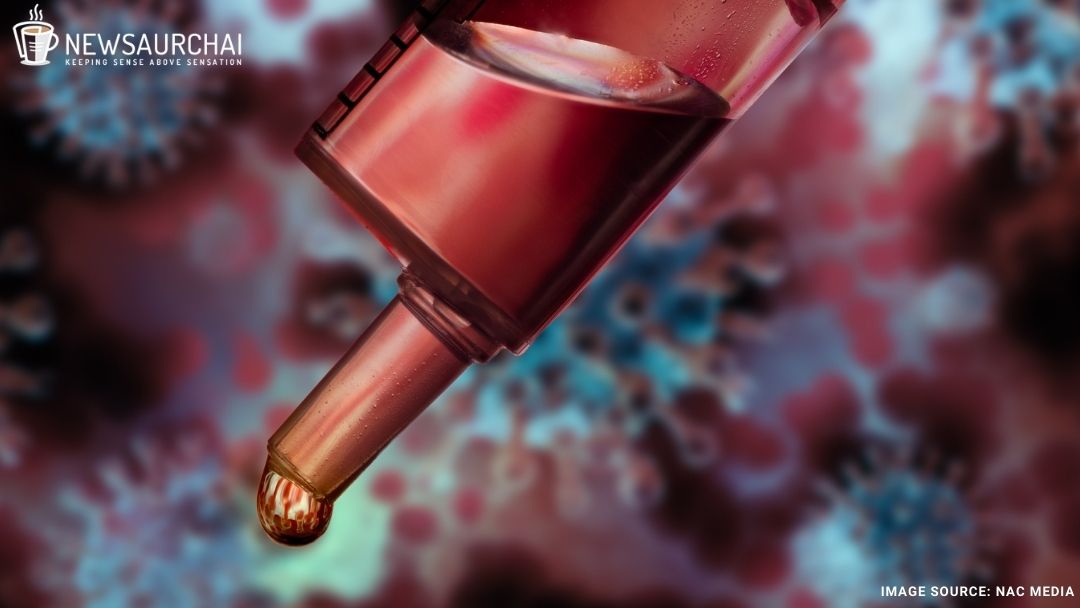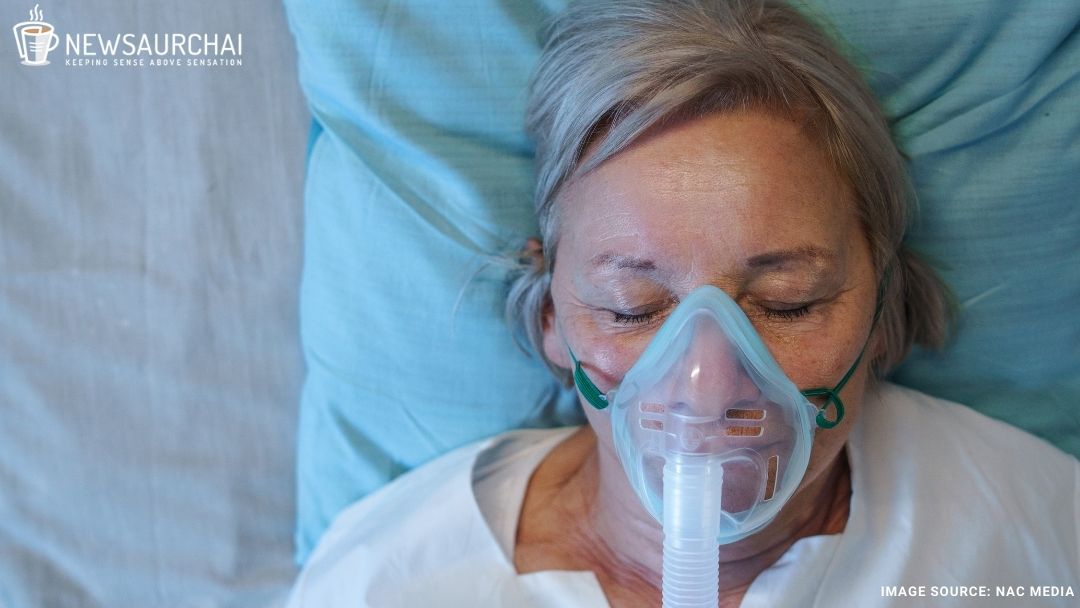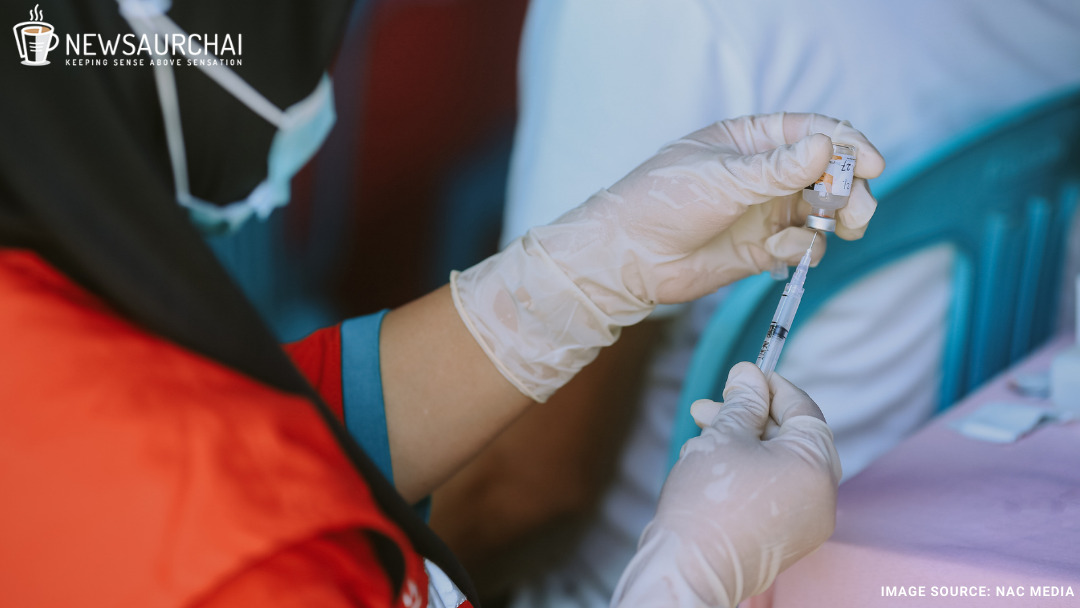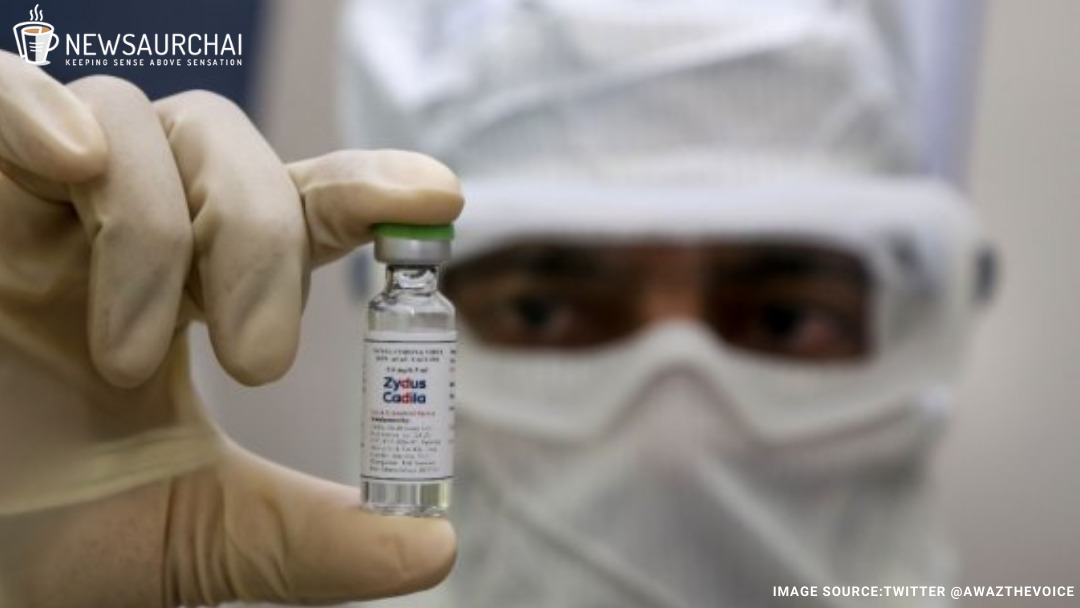Grim Situation During COVID’s Second Wave

The second wave of the Covid-19 coronavirus pandemic is wreaking havoc in India. At the beginning of the year, it seemed India had effectively controlled the spread of the virus. The vaccination drive had also begun. India hoped to vaccinate 250 million people by July 2021.
With light at the end of the tunnel, a sense of normalcy crept in. And India let its guard down against the virus. Cinema halls, restaurants, schools, gyms reopened. Weddings, religious gatherings and travel resumed. Farmer unions from Punjab and Haryana blocked the state borders of Delhi in protest against the farm laws. The states of Assam, Kerala, Tamil Nadu, West Bengal and the Union Territory of Puducherry went to the polls and saw massive election rallies.
This complacency observed by the people and the governments across the nation has put India in a precarious position. On April 30, India breached the 4-lakh mark for new cases and registered 3523 deaths. The supply of vaccine doses, availability of beds, medical oxygen, remdesivir is the need of the hour. The baton to manage the crisis is in the hands of the state governments. Vaccinating the population while managing the crisis is the only way forward.
Vaccination Drive
India started vaccinating people on January 16, 2021. The country registered 16,000 odd new cases. It was the average during the period from mid-January to the beginning of March. Due to the low number of cases, the vaccination drive was slow. The phased, gradual rollout of vaccines reached only a section of the population.
The first phase of vaccination rollout saw the elderly get vaccinated. All people above the age of 65 were eligible. The second phase started on March 1. Senior citizens above the age of 60 and people above the age of 45 with comorbidities were brought under the vaccination program. Later, all people above 45 could get vaccinated.
In the third phase of the vaccination drive, The government announced vaccinations for people above the age of 18. They would be eligible to get vaccinated from May 1. However, a shortage of vaccine doses has delayed vaccinations. Only six states – Maharashtra, Rajasthan, Uttar Pradesh, Chhattisgarh, Gujarat and Odisha – are going forward with vaccinating the population above 18 from May 1. The vaccination program in these states is restricted to a few districts.
According to the data on the Ministry of Health and Family Welfare (MoHFW) website, a total of 154,989,635 doses of vaccine were administered to date. 127,056,746 people received one dose of the vaccine (Covaxin or Covishield). 27,932,889 received both doses. This amounts to 9 per cent of the population receiving a single dose. 2 per cent of the population has been fully vaccinated.
Apart from the slow pace of vaccination rollout, the vaccination drive of India slowed down due to the non-availability of raw materials to manufacture vaccines. The other reason for a slow down is that the government did not order enough vaccines. The Union Government paid for 1.1 crore vaccines in January. A bulk order would have given the Serum Institute of India (SII) and Bharat Biotech enough capital to produce vaccines for the entire population.
Condition in the Different States in the Country
The crisis created by the second wave of the pandemic saw a breakdown of health infrastructure. Many states in the country are dealing with a shortage of beds, ventilators, oxygen supply, medicines and vaccines. The Supreme Court and the High Courts in various states have taken suo-moto cognizance of the situation. They have rapped the states and the Centre on their knuckles about the prevailing situation and redressal measures.
Instances of hoarding of medical supplies and oxygen have also been reported. The police arrested the individuals involved and registered cases. With the state governments overlooking vaccination programs, a peek into the measures adopted by different states will paint a picture of the existing situation.
Maharashtra
The state of Maharashtra is the worst affected by the pandemic in the country. It is reporting more than 60,000 cases and 1000 deaths daily. The Health Ministry warned the state in January about the rising number of coronavirus cases.
Corruption by travel operators and government officials entrusted with screening international passengers saw the spread of the virus. Fires broke out in COVID designated centres in the state. An oxygen leak at a hospital in Nashik saw 22 people dead. The state saw a shortage of Remdesvir.
At the moment, the state of Maharashtra is under lockdown. Maharashtra Chief Minister Uddhav Thackeray addressed the state on the issues of availability of medical oxygen, vaccines and more.
On the issue of oxygen, he said the state can produce 1200 MT of oxygen. He told the hospitals that they should have oxygen generating plants. Tenders were issued for them, and the procurement has begun. “We are using 1700 MT per day. We are trying to transport oxygen on a timely basis but if the numbers keep rising, this can be a problem”, he added.
The CM addressed the state on the situation of availability of vaccines in the state. He said that the state government is ready to purchase 12 crore doses of vaccines. He further added, “We are in talks with all vaccine-making companies – not just Serum Institute of India and Bharat biotech, but also Sputnik V… As per the Central government, 18 lakh doses will be allotted to us in May”. The state of lockdown in Maharashtra could be prolonged due to the high number of cases.
Delhi
The situation in the state of Delhi is horrific. The state faces a double crisis- a crisis created by the spread of the pandemic, another created due to political bickering. It is exacerbated by the hoarding of medicines and medical oxygen.
The Supreme Court and the Delhi High Court stepped in to bring a semblance of accountability in the state. The state is suffering from a lack of beds, oxygen and medicines. The Delhi High Court came down hard on both the state and central government. The courts minced no words in their observations. The Delhi High Court warned of contempt action against the Centre if it did not supply Delhi the allotted amount of oxygen. Taking cognizance of the deaths at Batra Hospital due to lack of oxygen, the court told the Centre “enough is enough”. It further asked the Centre, “Do you mean we will shut our eyes to the people dying Delhi.”
On black marketing of oxygen and medicines in the state, the court told the Delhi government that ‘the system has failed’. It cautioned the government to get its house in order. The bench of Justice Vipin Sanghi and Justice Rekha Palli told the government, “If you can’t manage it, tell us. Then we will ask the Central government to take over. We can’t let people die”. The court also ordered the Delhi government to release Remdesivir seized from the hoarders.
The Supreme Court told the Delhi government there must not be any politics on the matter of the Covid-19 pandemic. It said, “We want to send a message to the Delhi government that it must take the approach of cooperation. Please send the message to the highest level that at extreme times, there should not be any political bickering.”
The Delhi Police arrested seven people for black marketing oxygen cylinders and Remdesivir. In the latest incident, it busted a racket in East Delhi’s Laxmi Nagar and arrested three people. The accused people allegedly sold the drug Remdesivir at an exorbitant price of ₨ 40,000 per injection. The police seized three Remdesivir vials, ₨ 1,20,00 in cash, 100 oximeters and 48 small oxygen cylinders.
A political blame game is played by the ruling-BJP government and the AAP-ruled Delhi government. Accusations were hurled thick and fast on the issue of money sanctioned for oxygen manufacturing plants in Delhi. At present, Delhi has 99,361 active cases and a death toll of 16,147. The Delhi government extended the lockdown for another week to control the rising number of cases.
Uttar Pradesh
The statements of Chief Minister Yogi Adityanath and the ground reality in Uttar Pradesh (UP) are mismatched. The CM on television stated that there was no shortage of beds, oxygen supply or drugs in the state. The reality paints a different picture. Hospitals in the cities of Meerut and Agra put up notices asking kin of patients not to admit them due to a shortage of oxygen supply. The situation is the same in the case of the availability of hospital beds.
Kins of patients are running from pillar to post to secure the availability of oxygen and Remdesivir. The hospitals are putting the onus of getting oxygen for patients on their relatives. An oxygen manufacturing plant shut its offices indefinitely after a scuffle broke out between management and the local population. People are adding to the problem by occupying beds despite not requiring hospitalization. Several people occupied beds in private hospitals of Noida and Greater Noida. The Gautam Buddh Nagar administration vacated over 200 people after they did not need hospitalization as per their health condition.
The hoarding and black marketing of Remdesivir and oxygen supplies is happening in large numbers in UP. A week-long crackdown by the state police resulted in the arrest of 29 people. The police seized 628 Remdesivir vials and 185 oxygen cylinders. The UP government announced a total lockdown from April 30 to 7 am on May 4. A silver lining for Uttar Pradesh is the number of recoveries is higher than the number of new cases. UP recorded 30,180 new cases and 38,826 recoveries on May 1. 304 people succumbed to the virus.
Karnataka
The cases of Covid-19 are increasing at an alarming rate in Karnataka. Over the last 24 hours, Karnataka recorded 35,024 new cases. Of these, 19,637 were reported from the city of Bengaluru. On May 1, the state reported 40,990 new cases and 18,341 recoveries. The city of Bengaluru reported 19,353 cases. 271 people succumbed to the virus in the state.
The Karnataka government claimed that 25 per cent of newly infected patients were untraceable. 3000 people placed in home quarantine have gone missing. The hospitals and officials are unable to reach them. The patients have turned off their mobile phones. The mobile phones of a few people are unreachable—this a super spreader calamity due to a lack of civic sense. On the status of vaccination rollout in the state Chief Minister B S Yeddyurappa stated on Thursday that the Government of India supplied 99.40 lakh doses of vaccine to the state. 93.50 lakh doses of vaccine were administered, and 5.9 lakh doses are available. He added that the vaccination drive for the age group 18-45 would be undertaken in a phased manner.
Karnataka is not starting the third phase of vaccination from May 1. It has a shortage of vaccinations. The state government launched the third phase with a symbolic gesture. The CM stated the state is procuring an additional one crore doses of the Covid-19 vaccine from private companies. The state of Karnataka is under lockdown for two weeks. The statewide curfew will last till May 4. Its southern neighbour Kerala faces similar difficulties. The Kerala government has ordered one crore vaccine doses for its vaccination drive.
Telangana
At the height of the second wave, the Health Minister of Telangana Etela Rajendra has resigned on land grabbing charges. Chief Minister K Chandrasekhar Rao ordered a probe into the irregularities. The number of cases reported by the Telangana over the last week ranged between 7000-10,000. There is no district-wise break up of cases provided by the government. There is an acute shortage of vaccine doses in the state. People supposed to receive the second dose are finding difficulties in registration.
The state government has not rolled out the third phase of vaccination for the age group 18-45. Meanwhile, the government has recalled the doses of vaccine from private hospitals. It asked the private hospitals to obtain vaccines directly from the manufacturers. The situation is the same in all the states across the country. Smaller states like Goa and the states in the North East are recording smaller numbers. Thus they remain out of the news cycle.
Manufacturers have informed state governments about a delay in the supply of vaccines. Maharashtra asked SII to provide 120 million doses. SII told the government supply would not be possible till May 20. Rajasthan said that it was given a tentative date of May 15. Odisha said Bharat Biotech could make a supply of vaccines only in mid-May.
The alarming numbers in the second wave of the pandemic result from a collective failure. A short-sighted approach in placing orders by the Central government has resulted in a vaccine shortage. The people contributed by disregarding safety protocols of masking and social distancing. It will take a while before India overcomes the second wave.






3 Comments